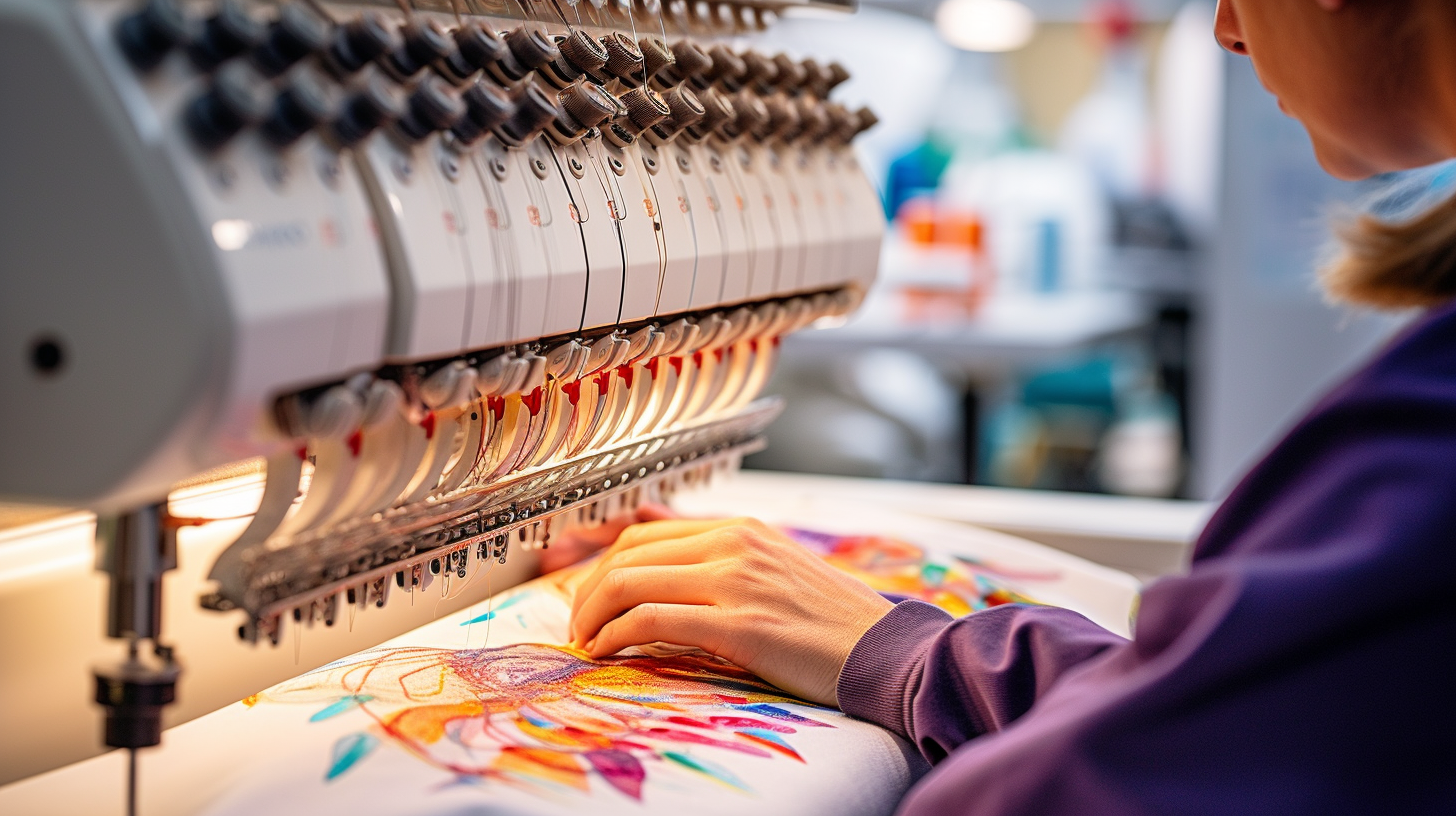Top Notch Digitizing for Embroidery: Specialist Workmanship
Top Notch Digitizing for Embroidery: Specialist Workmanship
Blog Article
Grasping the Embroidery Digitizing Refine: Your Ultimate Guide
Needlework digitizing is a thorough craft that requires accuracy and knowledge to convert elaborate styles right into electronic formats for maker needlework. As craftsmens start this trip to master the embroidery digitizing procedure, a detailed understanding of the essentials establishes the structure for excellence. However, beyond the rudimentary understanding lies a world of advanced software program, specialized devices, and nuanced techniques waiting to be checked out. By delving right into the subtleties of digitizing, one can open a globe of imaginative opportunities and boost their needlework tasks to brand-new elevations.

Recognizing Needlework Digitizing Essentials
Needlework digitizing essentials create the structure upon which complex styles are equated into machine-readable styles for accurate stitching. This initial step in the needlework digitizing procedure is critical for ensuring that the last stitched product is a devoted representation of the original layout. Recognizing needlework digitizing essentials entails realizing vital principles such as stitch kinds, sew instructions, density, padding, and pull compensation.
Stitch types play an important role in identifying the visual and textural outcome of the embroidered design. By selecting the ideal stitch kind, whether it be satin, fill, or running stitch, digitizers can achieve the wanted impact and enhance the overall top quality of the embroidery. Additionally, sew direction affects the circulation and dimension of the layout, while density determines the spacing and insurance coverage of the stitches.
Additionally, padding stitching provides security to the design by safeguarding the material and avoiding distortion throughout the embroidery procedure. Pull settlement is one more important factor to consider to combat the natural tendency of textile to contract when sewn. Understanding these embroidery digitizing essentials is fundamental for developing professional-quality embroidered items.
Selecting the Right Digitizing Software Program
Picking the appropriate digitizing software application is a crucial decision that dramatically influences the efficiency and high quality of the embroidery digitizing process. Digitizing for Embroidery. When selecting the appropriate digitizing software, it is vital to take into consideration variables such as the intricacy of designs you plan to create, the user-friendliness of the software, the level of client support provided, and the compatibility with your embroidery device
There are various digitizing software application choices offered out there, varying from fundamental programs for novices to sophisticated software application for expert digitizers. Some prominent options include Wilcom EmbroideryStudio, Hatch Embroidery Software Application, and PulseID. These software use a vast array of devices and functions to assist you create intricate layouts with ease.
Prior to deciding, it is advisable to discover the various software options with complimentary trials or demonstrations to identify which one best suits top article your demands. Furthermore, reading reviews and looking for suggestions from skilled digitizers can offer beneficial insights into the toughness and weaknesses of each software application package (Digitizing for Embroidery). By meticulously examining your requirements and contrasting the functions of various digitizing software application, you can make an informed selection that improves your needlework digitizing workflow
Digitizing Devices and Methods

Optimizing Layout Setup for Needlework
Grasping the ins and outs of style settings is fundamental in achieving optimum cause the needlework digitizing process, building upon the foundation laid by comprehending digitizing tools and techniques. When enhancing layout settings for embroidery, it is vital to take into consideration elements such as stitch type, thickness, underlay, pull payment, and registration. Sew kind selection influences the total feel and look of the layout, with alternatives like satin, fill, and running stitches using different appearances and impacts. Density describes the spacing click for source and density of stitches, affecting the layout's protection and toughness. Appropriate underlay sewing supplies stability and prevents textile distortion, particularly for complex styles or on stretchy products. Draw compensation readjusts for material stretch throughout sewing, guaranteeing exact style duplication. Registration setups line up various components of the layout properly, preserving general layout integrity. By fine-tuning these design settings, embroiderers can enhance the top quality and accuracy of their stitched creations.

Troubleshooting Common Digitizing Issues
When coming across usual digitizing issues throughout the embroidery procedure, it is crucial to recognize the root triggers and apply effective options without delay. One common issue is stitch thickness issues, where stitches might be also dense, creating the textile to pucker, or as well sporadic, bring about gaps in the design. Changing the stitch thickness setups in the digitizing software can help fix this problem.
An additional constant challenge is thread breaks during the needlework procedure. This can take place due to various reasons such as inaccurate stress setups, dull needles, or utilizing low-grade string. Ensuring appropriate upkeep of the needlework equipment, including routine needle adjustments and stress changes, can decrease the event of string breaks.
In addition, layout enrollment mistakes can lead to misaligned aspects within the needlework style. Inspecting the style positioning in the digitizing software application and making needed modifications before sewing can aid in preventing this issue. By resolving these usual digitizing problems immediately and effectively, you have a peek at this website can ensure a smoother needlework process and high-quality completed items.
Final Thought
In verdict, grasping the embroidery digitizing procedure requires a strong understanding of the fundamentals, the best selection of software, and expertise of tools and techniques. Enhancing style settings and troubleshooting typical digitizing concerns are vital action in making certain high-quality embroidery outcomes. By complying with these steps diligently, one can accomplish precision and efficiency in the digitizing procedure.
Report this page